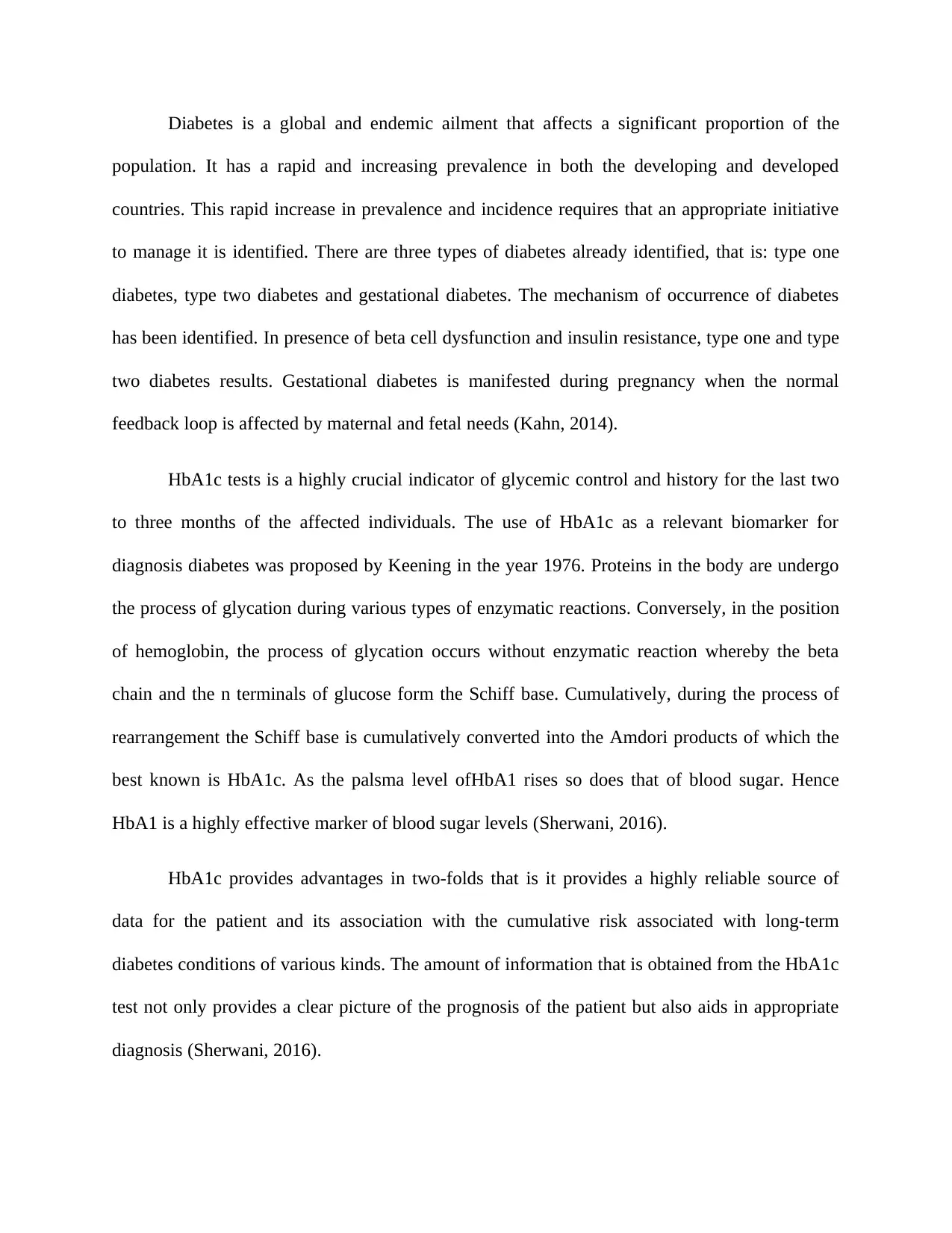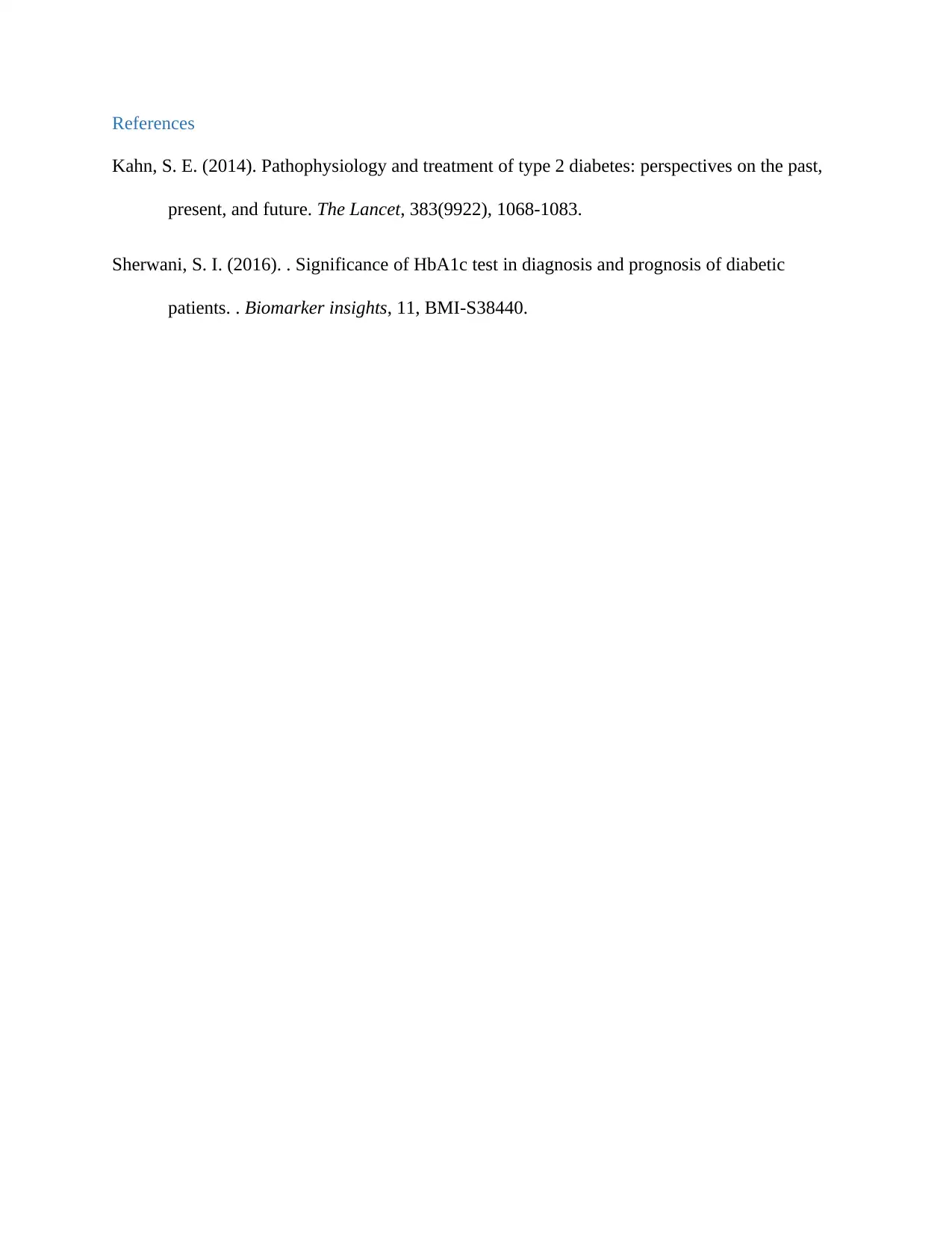Diabetes Report: HbA1c Test, Significance, and Analysis of Findings
VerifiedAdded on 2021/06/18
|3
|419
|20
Report
AI Summary
This report provides a comprehensive overview of the HbA1c test and its significance in the context of diabetes. It explores the role of the HbA1c test as a crucial biomarker for assessing glycemic control and its impact on the diagnosis and prognosis of diabetes, including type 1, type 2, and gestational diabetes. The report highlights the pathophysiology of diabetes, the mechanism of HbA1c formation, and its advantages in providing reliable data and assessing long-term risks. The analysis covers the role of HbA1c in monitoring blood sugar levels and aiding in diagnosis, supported by references to relevant research and studies. The report emphasizes the importance of the HbA1c test in diabetes management, offering valuable insights into patient outcomes and treatment strategies.
1 out of 3








![[object Object]](/_next/static/media/star-bottom.7253800d.svg)